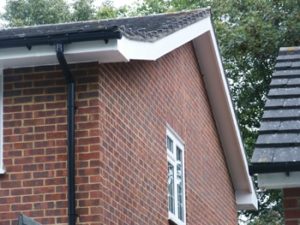
Timber Fascias
Add a review FollowOverview
-
Founded Date December 28, 1904
-
Sectors Food Services
-
Posted Jobs 0
-
Viewed 49
Company Description
The 10 Most Scariest Things About Fascia And Soffit Maintenance
Fascia and Soffit Maintenance: A Comprehensive Guide
When it concerns maintaining a home, the value of outside aspects like fascia and soffit can not be overstated. These components not only add to the aesthetic appeal of a residential or commercial property but likewise serve vital functions in terms of ventilation, wetness control, and structural integrity. This post looks into fascia and soffit maintenance, covering their definitions, functions, common concerns, and efficient maintenance practices to guarantee their longevity and efficiency.
Understanding Fascia and Soffit
Fascia is the vertical board that runs along the edge of the roof, typically where the roofing eaves extend. It holds the gutter system in location and is typically painted to match or accentuate the exterior of the home.

Soffit, on the other hand, is the horizontal board that connects the fascia to the home’s exterior wall. Soffits are typically vented to permit air flow into the attic space, promoting ventilation and preventing heat and moisture accumulation.
Functions of Fascia and Soffit
The main functions of fascia and soffit consist of:
- Protection: They shield the attic and roofing system structure from the elements, consisting of rain, snow, and pests.
- Ventilation: The vented soffit enables for appropriate airflow, which assists to prevent mold and condensation in the attic.
- Aesthetic Appeal: Both fascia and soffit add to the overall curb appeal of a home, enhancing its visual interest.
Common Issues with Fascia and Soffit
Like any part of a home, fascia and soffit can deal with a series of issues that may jeopardize their efficiency. Common problems include:
- Rotting: Moisture and humidity can result in wood rot in both fascia and soffit, compromising their structural stability.
- Bug Infestation: Insects, like bees, wasps, and termites, might nest in these locations if left unattended.
- Peeling Paint: As weather condition and time take their toll, paint can start to peel, diminishing the home’s look and enabling additional moisture infiltration.
- Gutter Issues: Poorly installed or kept rain gutters can overflow, leading to water damage and soil disintegration around fascia and soffit.
- Vent Blockages: Dust, debris, and nesting products can impede airflow from soffit vents, resulting in inappropriate ventilation in the attic.
Maintenance Tips for Fascia and Soffit
Regular maintenance is crucial for ensuring fascia and soffit stay functional and appealing. Here are some necessary maintenance steps:
1. Regular Inspections
Conduct regular evaluations, specifically after serious weather, to look for indications of damage or wear. Search for:
- Cracks or splits in the fascia
- Indications of rot or mold
- Loose or sagging areas
- Insect activity
2. Clean Gutters and Downspouts
Clogged up seamless gutters can cause water pooling, which increases the threat of decomposing fascia and soffit. Guarantee gutters and downspouts are without debris and working effectively:
- Remove leaves, twigs, and dirt
- Flush with water to check drain
- Clear any clogs
3. Painting and Finishing
If fascia and soffit are wood, painting or staining them can boost their resistance to wetness and bugs:
- Choose resilient, weather-resistant paint or stain
- Repaint every couple of years as needed
- Repair any peeling before repainting to guarantee adhesion
4. Ensure Proper Ventilation
To avoid wetness accumulation in the attic, guarantee that soffit vents remain clear:
- Remove any clogs caused by debris or pests
- Clear exterior soffit holes to allow correct air flow
5. Replace Damaged Materials
If any fascia or soffit boards reveal considerable damage or rot, replace them instantly to avoid further issues:
- Use rot-resistant materials like PVC or aluminum
- Consult a professional for comprehensive damage
6. Professional Inspection and Repairs
For any significant concerns, such as insect infestations or extreme structural issues, enlist a professional for a thorough inspection and repairs:
- Schedule a yearly professional inspection
- Address issues without delay to prevent costly repairs later
Table: Maintenance Checklist for Fascia and Soffit
| Maintenance Task | Frequency | Notes |
|---|---|---|
| Visual Inspection | Month-to-month | Search for damage, rot, and bug activity |
| Clean Gutters | Bi-annually | Ensure efficient water drainage |
| Paint/Stain | Every 3-5 years | Use weather-resistant materials |
| Clear Soffit Vents | Each year | Avoid air flow blockages |
| Change Damaged Sections | As required | Use rot-resistant materials |
| Professional Inspection | Annually | Seek advice from an expert for major issues |
FAQs About Fascia and Soffit Maintenance
Q: How typically should I examine my fascia and soffit?A: It is advised
to examine these features monthly, particularly after extreme weather condition conditions. Q: Can I paint fascia and soffit myself?A: Yes, numerous house owners choose to do this themselves. Nevertheless, guarantee you follow proper precaution and choose weather-resistant paint for long lasting outcomes. Q: What need to I do if I discover rot on my fascia?A: If the damage is minimal, you might have the ability to
repair it with wood filler or epoxy. For comprehensive damage, changing the affected area is recommended. Q: How does bad ventilation impact my attic?A: Poor ventilation can cause moisture accumulation, which can trigger mold growth, structural damage,and increased energy expenses due to ineffective heating & cooling. Q: Are there any products that are much better matched for fascia and soffit?A: Yes, vinyl, aluminum, and dealt with wood are popular options due to their sturdiness and resistance to
rot and bugs. Keeping fascia and soffit is vital for maintaining the stability, security, and visual appeal of a home. Regular assessments, cleaning, painting, ensuring appropriate ventilation,
and professional interventions when essential can considerably extend the life of these key parts. Homeowners need to stay proactive in their maintenance efforts to avoid costly repairs and guarantee their homes remain secured from the aspects.
